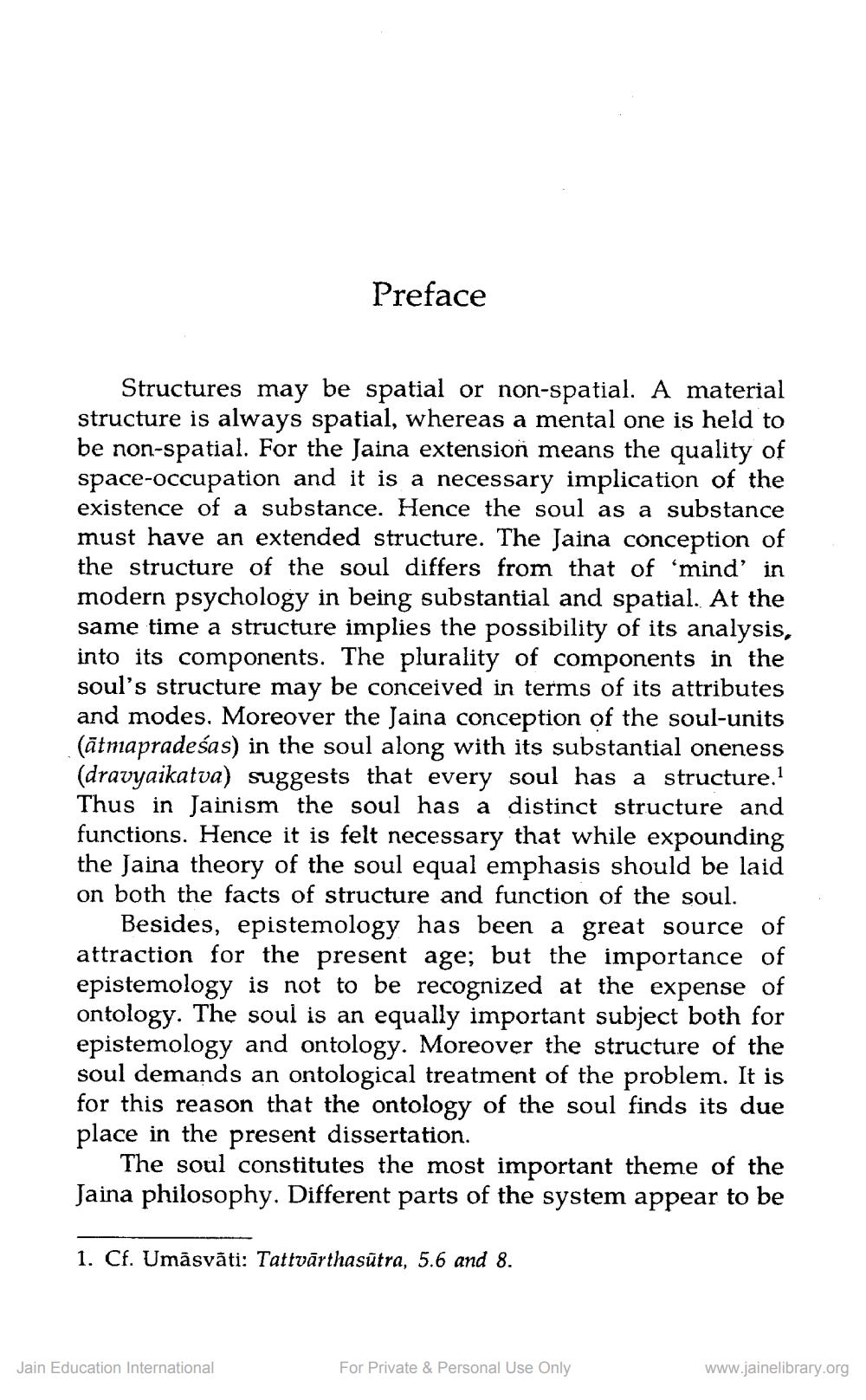Book Title: Structure and Functions of Soul in Jainism Author(s): S C Jain Publisher: Bharatiya Gyanpith View full book textPage 9
________________ Preface Structures may be spatial or non-spatial. A material structure is always spatial, whereas a mental one is held to be non-spatial. For the Jaina extension means the quality of space-occupation and it is a necessary implication of the existence of a substance. Hence the soul as a substance must have an extended structure. The Jaina conception of the structure of the soul differs from that of ‘mind' in modern psychology in being substantial and spatial. At the same time a structure implies the possibility of its analysis, into its components. The plurality of components in the soul's structure may be conceived in terms of its attributes and modes. Moreover the Jaina conception of the soul-units (ātmapradeśas) in the soul along with its substantial oneness (dravyaikatva) suggests that every soul has a structure.? Thus in Jainism the soul has a distinct structure and functions. Hence it is felt necessary that while expounding the Jaina theory of the soul equal emphasis should be laid on both the facts of structure and function of the soul. Besides, epistemology has been a great source of attraction for the present age; but the importance of epistemology is not to be recognized at the expense of ontology. The soul is an equally important subject both for epistemology and ontology. Moreover the structure of the soul demands an ontological treatment of the problem. It is for this reason that the ontology of the soul finds its due place in the present dissertation. The soul constitutes the most important theme of the Jaina philosophy. Different parts of the system appear to be 1. Cf. Umāsvāti: Tattvārthasūtra, 5.6 and 8. Jain Education International For Private & Personal Use Only www.jainelibrary.orgPage Navigation
1 ... 7 8 9 10 11 12 13 14 15 16 17 18 19 20 21 22 23 24 25 26 27 28 29 30 31 32 33 34 35 36 37 38 39 40 41 42 43 44 45 46 47 48 49 50 51 52 53 54 55 56 57 58 59 60 61 62 63 64 65 66 67 68 69 70 71 72 73 74 75 76 77 78 79 80 81 82 83 84 85 86 87 88 89 90 91 92 ... 272
